Remembering Pierre Soulages (1919-2022), a pioneer of post-war abstraction
Pierre Soulages, the pioneering French printmaker, sculptor and ‘painter of black’, has died aged 102
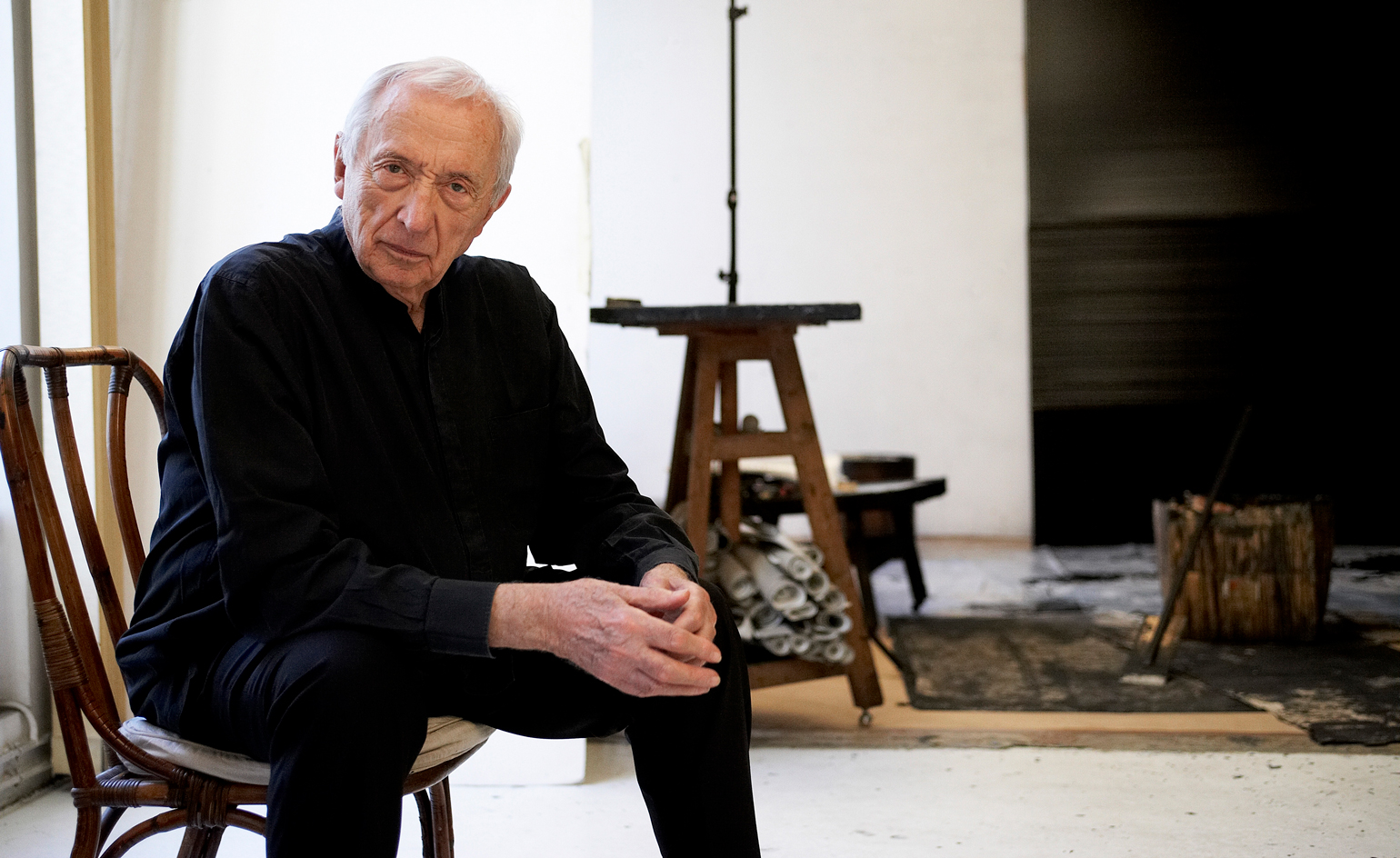
Trailblazing French painter, printmaker, and sculptor Pierre Soulages has died aged 102. He was a key proponent of art informel and abstract expressionism, and, most famously, a master of the colour black.
Known as ‘the painter of black and light’, Soulages was born in Rodez, a small town in the south of France, in 1919. His enthusiasm for painting can be traced back to his childhood. during which he drew inspiration from the prehistoric standing stones found near his hometown, and painted black winter trees on a dark background, the latter forming the premise of his painting practice for decades to come.
After a short stay in Paris in 1938, the artist spent the occupation working as a wine producer in central France. He relocated permanently to the French capital in 1946, settling in a small studio and devoting himself to painting. His early work was dynamic and abstract, conceived by applying dark colours in broad bar-like brushstrokes to immaculate white canvases. Although his paintings were closely aligned with abstract expressionism, Soulages always rejected the limits of lyrical abstraction: ‘Painting is not the equivalent of a sensation, an emotion, or a feeling; it is the organisation of coloured forms, on which is made and unmade a meaning that we impose on it’, he would later say.

Pierre Soulages in 1974
The postwar years were significant in Soulages’ career. After exhibiting his work at the Salon des Surindépendents in 1947, he was featured in the Grosse Ausstellung Französische Abstrakte Malerei, a major travelling exhibition of abstract art held in Stuttgart, and caught the attention of James Johnson Sweeney, the future director of the Guggenheim Museum in New York. This encounter led to his first solo show at Galerie Lydia Conti soon after. At the time, Soulages’ work was often perceived as a French counterpart to that of the New York school of artists, specifically the work of Franz Kline. Over the course of the 1960s, Soulages gained exposure and acclaim across both Europe and America, and was celebrated in a number of major retrospectives.
In 1979, Soulages began a body of work titled Outrenoir (‘beyond black’) which would go on to define his career. In this monochrome series, he would apply black acrylic in thick layers on canvas, before carving stripes and streaks into it. This technique created a surface in which smooth, glassy blocks of black met the roughness of raw canvas – his paintings were landscapes of light, shape, reflection and perception. Soulages’ experimental approach used tools of his own production as well as domestic utensils; he was driven by the desire to think outside the box, constantly on the hunt for innovation.
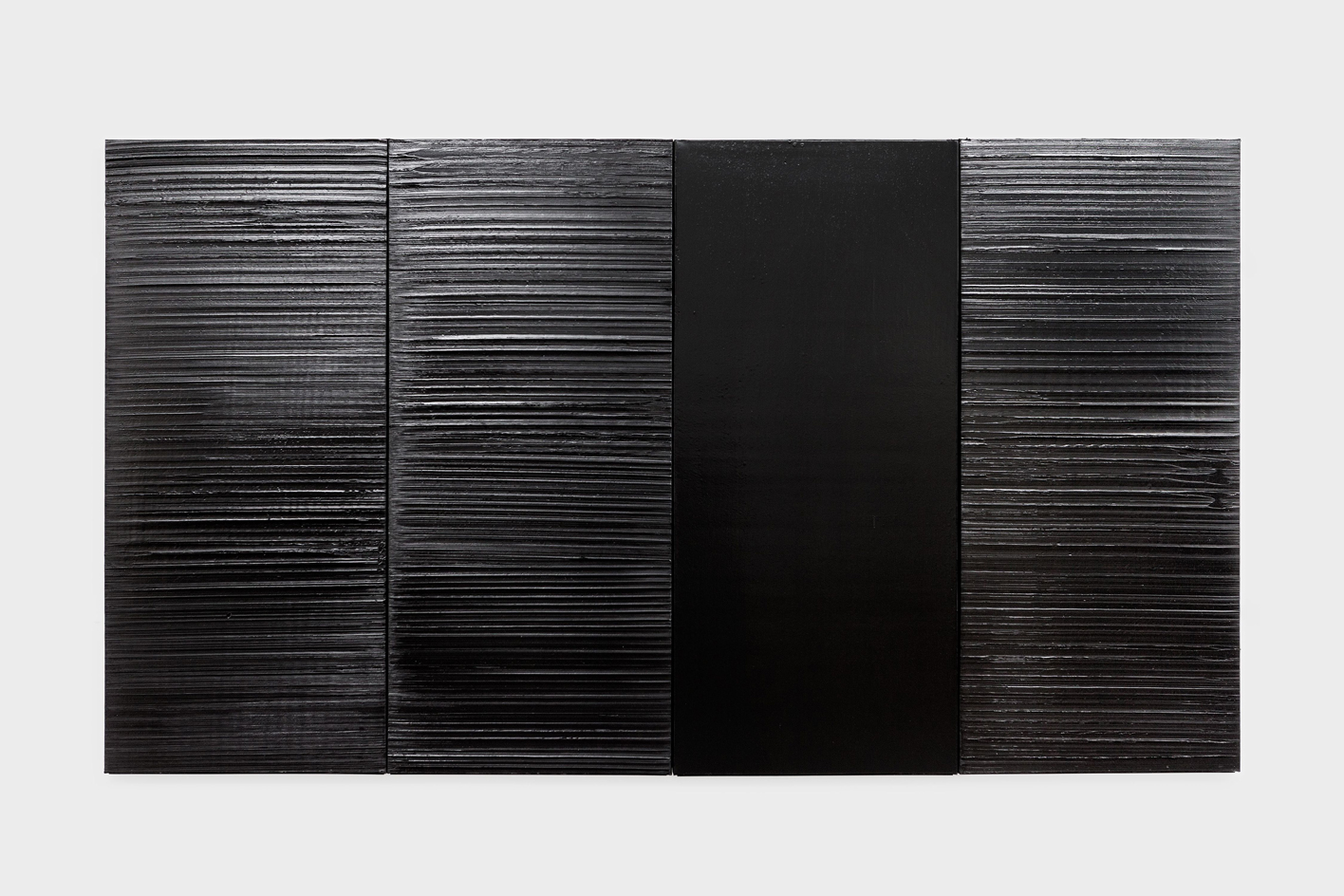
Pierre Soulages, #1_Peinture, 165 x 296 cm, 5 février 2014, 2014. Acrylic on canvas
In 2019, to mark the artist’s 100th birthday, the Louvre Museum, the Centre Pompidou, the Fabre Museum in Montpellier, and Perrotin gallery’s Shanghai location all organised exhibitions to honour his work. The gallery additionally published a monograph on the artist’s Outrenoir series.
As Emmanuel Perrotin, who began collaborating with the artist in 2017, said in a statement: ‘I will always remember our first meeting in 2012 in the house in Sète, with Colette: I met an extraordinarily dynamic couple there. They both immediately fascinated me with their memory and their energy.’ Perrotin described Soulages as ‘a great artist of course, but also a great soul, generous and friendly, a great figure of both 20th and 21th centuries and a great friend, who will remain in my heart and in that of the gallery teams. My thoughts go out to Colette and their team in Sète. We will all miss him dearly.’
Receive our daily digest of inspiration, escapism and design stories from around the world direct to your inbox.

Pierre Soulages, #3_Peinture, 222 x 137 cm, 22 septembre 2013, 2013. Acrylic on canvas.
Soulages was granted the Grand Prix National de Peinture in 1986. The following year, he received an ambitious commission from the French state to design 104 stained-glass windows for the Abbey Church of Sainte-Foy, located near his hometown of Rodez, a project that would take eight years to complete.
Known for a sensational ability to subtly depict the unseen, Pierre Soulages has gained worldwide recognition as a key figure in both abstract expressionism and art informel. By turning black into an incandescent colour, the artist put the spotlight on the origins of humanity in its darkness and light.
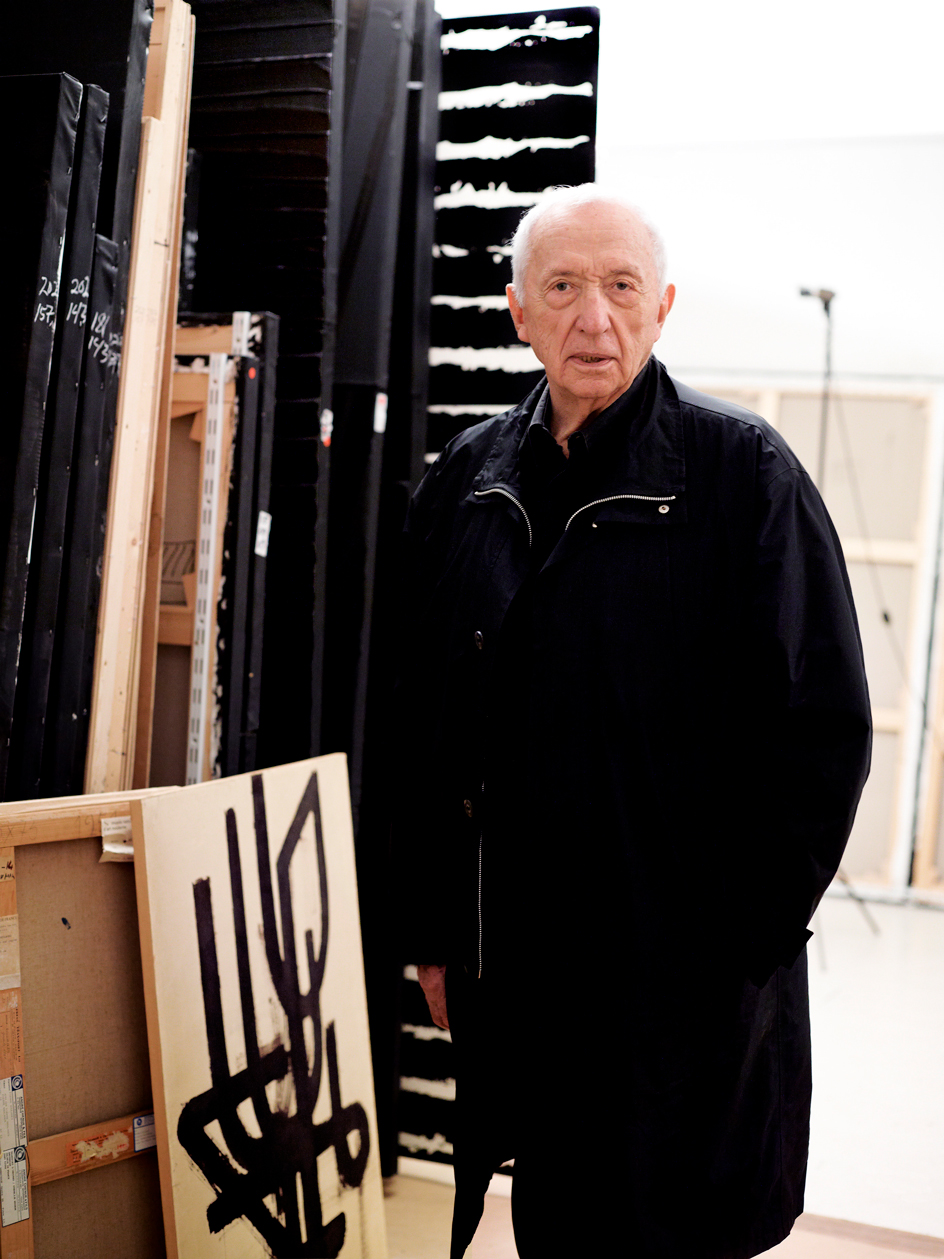
Portrait of Pierre Soulages
-
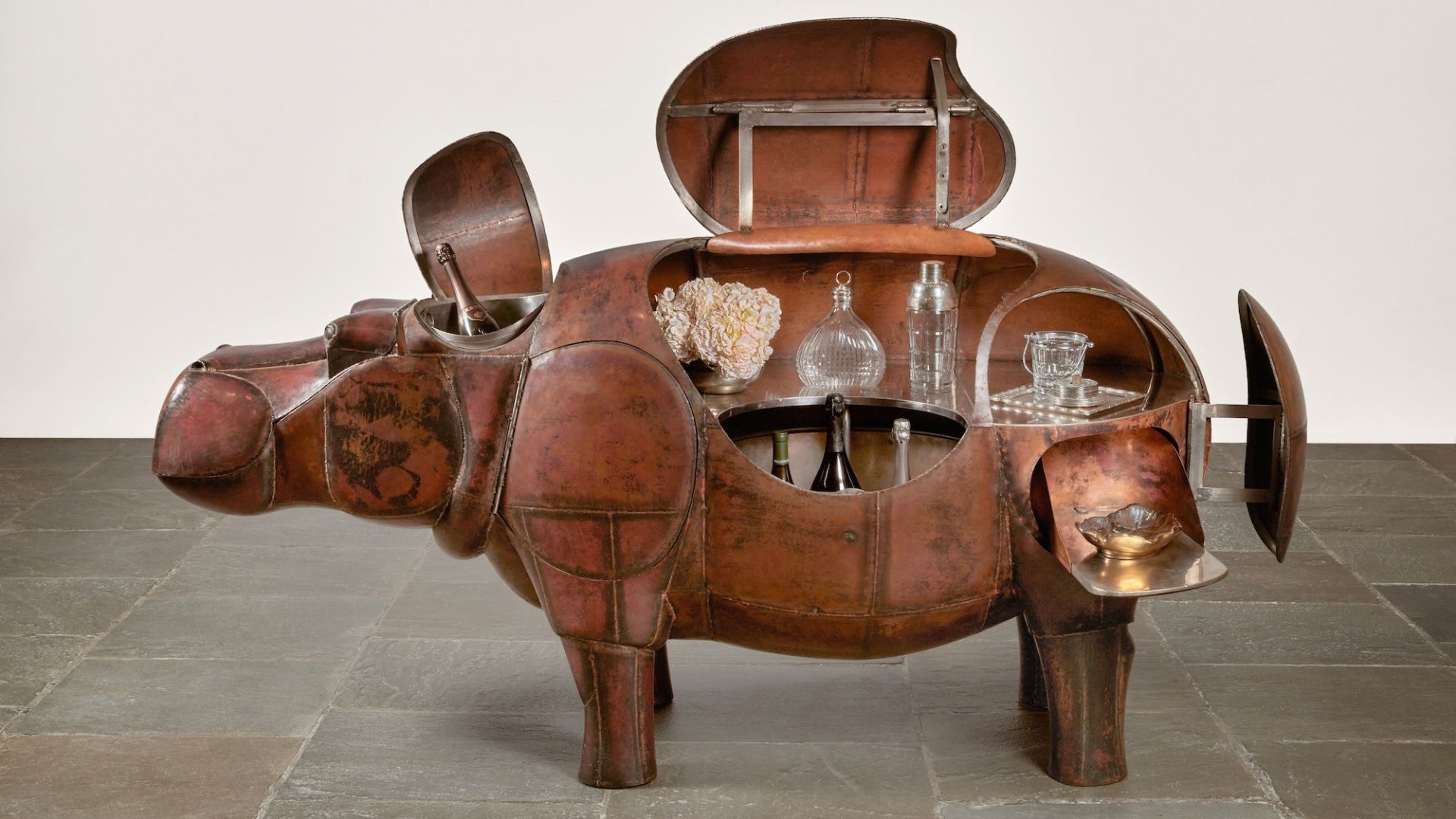 At $31.4 million, this Lalanne hippo just smashed another world auction record at Sotheby’s
At $31.4 million, this Lalanne hippo just smashed another world auction record at Sotheby’sThe jaw-dropping price marked the highest-ever for a work by François-Xavier Lalanne – and for a work of design generally
-
 NYC’s first alcohol-free members’ club is full of spirit
NYC’s first alcohol-free members’ club is full of spiritThe Maze NYC is a design-led social hub in Flatiron, redefining how the city gathers with an alcohol-free, community-driven ethos
-
 Inside Helmut Lang’s fashion archive in Vienna, which still defines how we dress today
Inside Helmut Lang’s fashion archive in Vienna, which still defines how we dress todayNew exhibition ‘Séance de Travail 1986-2005’ at MAK in Vienna puts Helmut Lang’s extraordinary fashion archive on view for the first time, capturing the Austrian designer-turned-artist’s enduring legacy
-
 This Gustav Klimt painting just became the second most expensive artwork ever sold – it has an incredible backstory
This Gustav Klimt painting just became the second most expensive artwork ever sold – it has an incredible backstorySold by Sotheby’s for a staggering $236.4 million, ‘Portrait of Elisabeth Lederer’ survived Nazi looting and became the key to its subject’s survival
-
 Meet Eva Helene Pade, the emerging artist redefining figurative painting
Meet Eva Helene Pade, the emerging artist redefining figurative paintingPade’s dreamlike figures in a crowd are currently on show at Thaddaeus Ropac London; she tells us about her need ‘to capture movements especially’
-
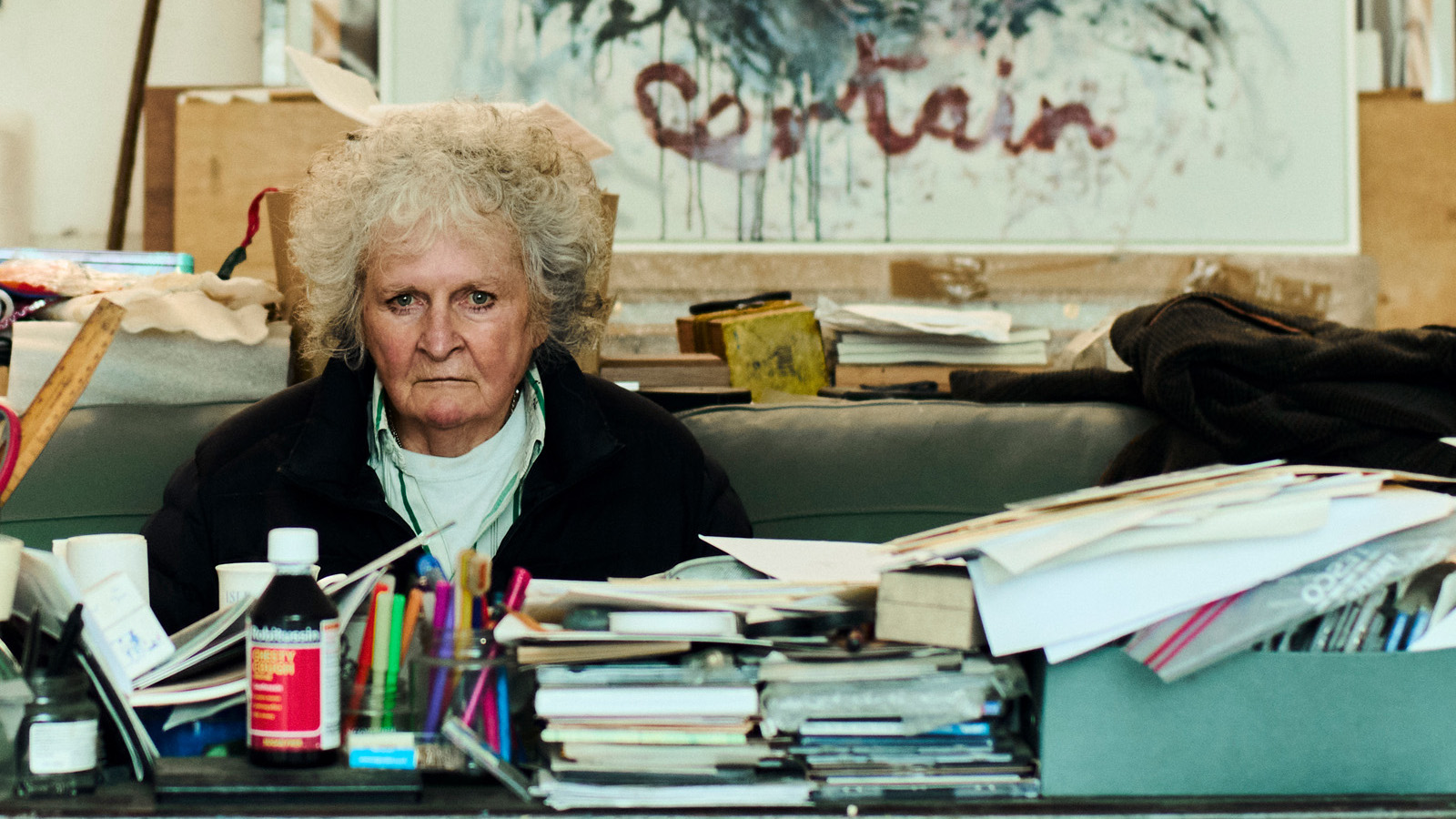 Maggi Hambling at 80: what next?
Maggi Hambling at 80: what next?To mark a significant year, artist Maggi Hambling is unveiling both a joint London exhibition with friend Sarah Lucas and a new Rizzoli monograph. We visit her in the studio
-
 Out of office: The Wallpaper* editors’ picks of the week
Out of office: The Wallpaper* editors’ picks of the weekThis week, the Wallpaper* editors curated a diverse mix of experiences, from meeting diamond entrepreneurs and exploring perfume exhibitions to indulging in the the spectacle of a Middle Eastern Christmas
-
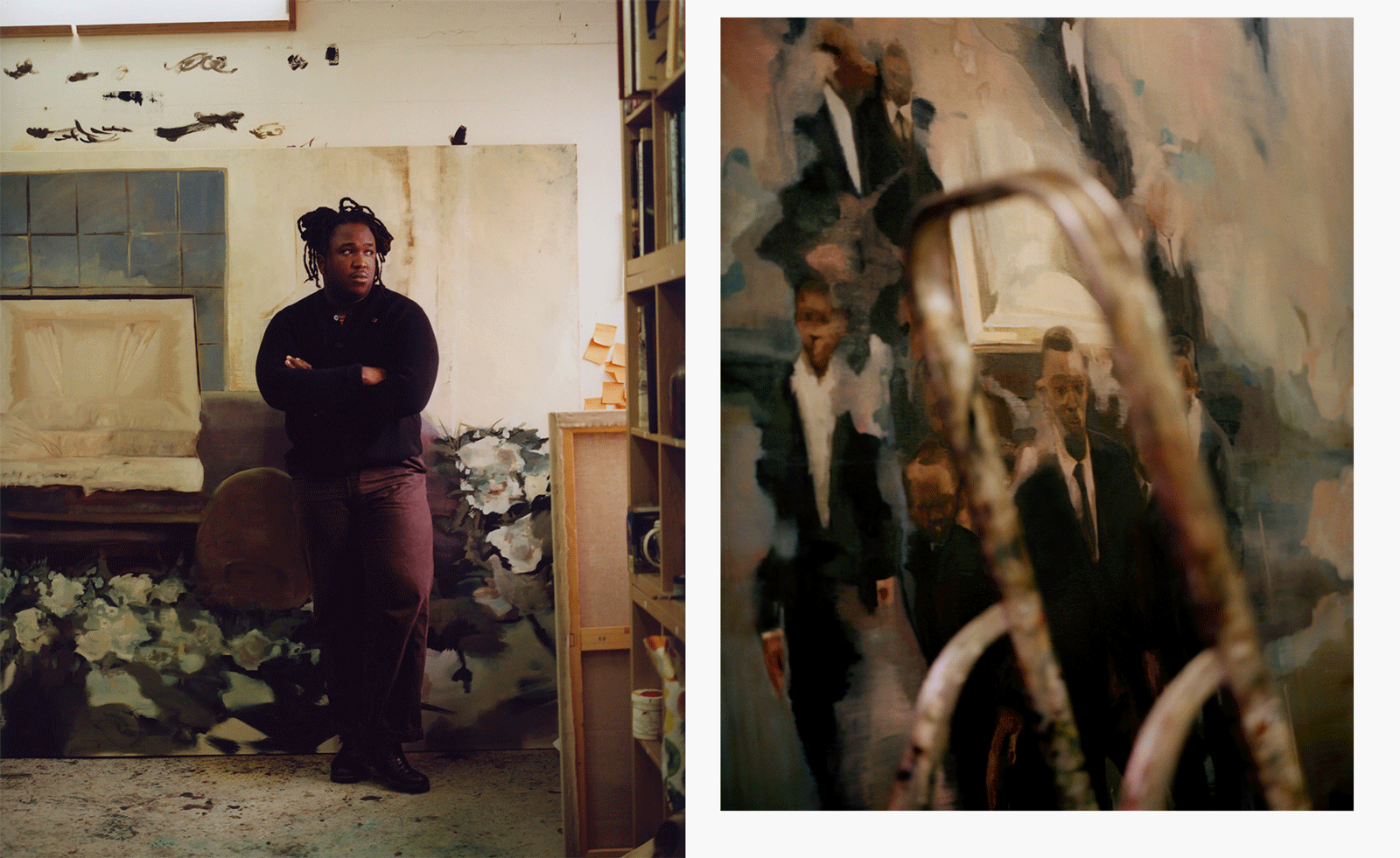 Artist Shaqúelle Whyte is a master of storytelling at Pippy Houldsworth Gallery
Artist Shaqúelle Whyte is a master of storytelling at Pippy Houldsworth GalleryIn his London exhibition ‘Winter Remembers April’, rising artist Whyte offers a glimpse into his interior world
-
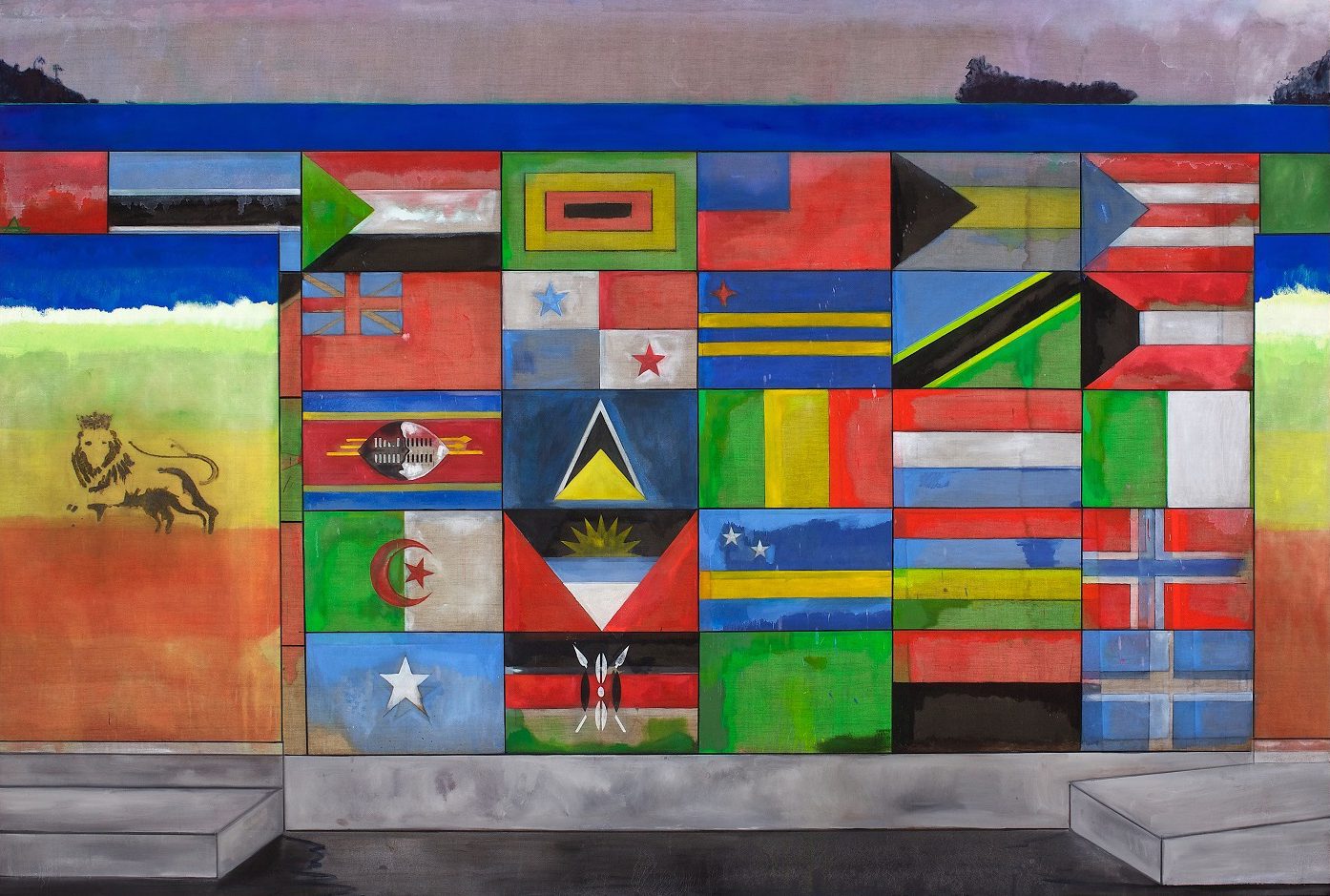 ‘Sit, linger, take a nap’: Peter Doig welcomes visitors to his Serpentine exhibition
‘Sit, linger, take a nap’: Peter Doig welcomes visitors to his Serpentine exhibitionThe artist’s ‘House of Music’ exhibition, at Serpentine Galleries, rethinks the traditional gallery space, bringing in furniture and a vintage sound system
-
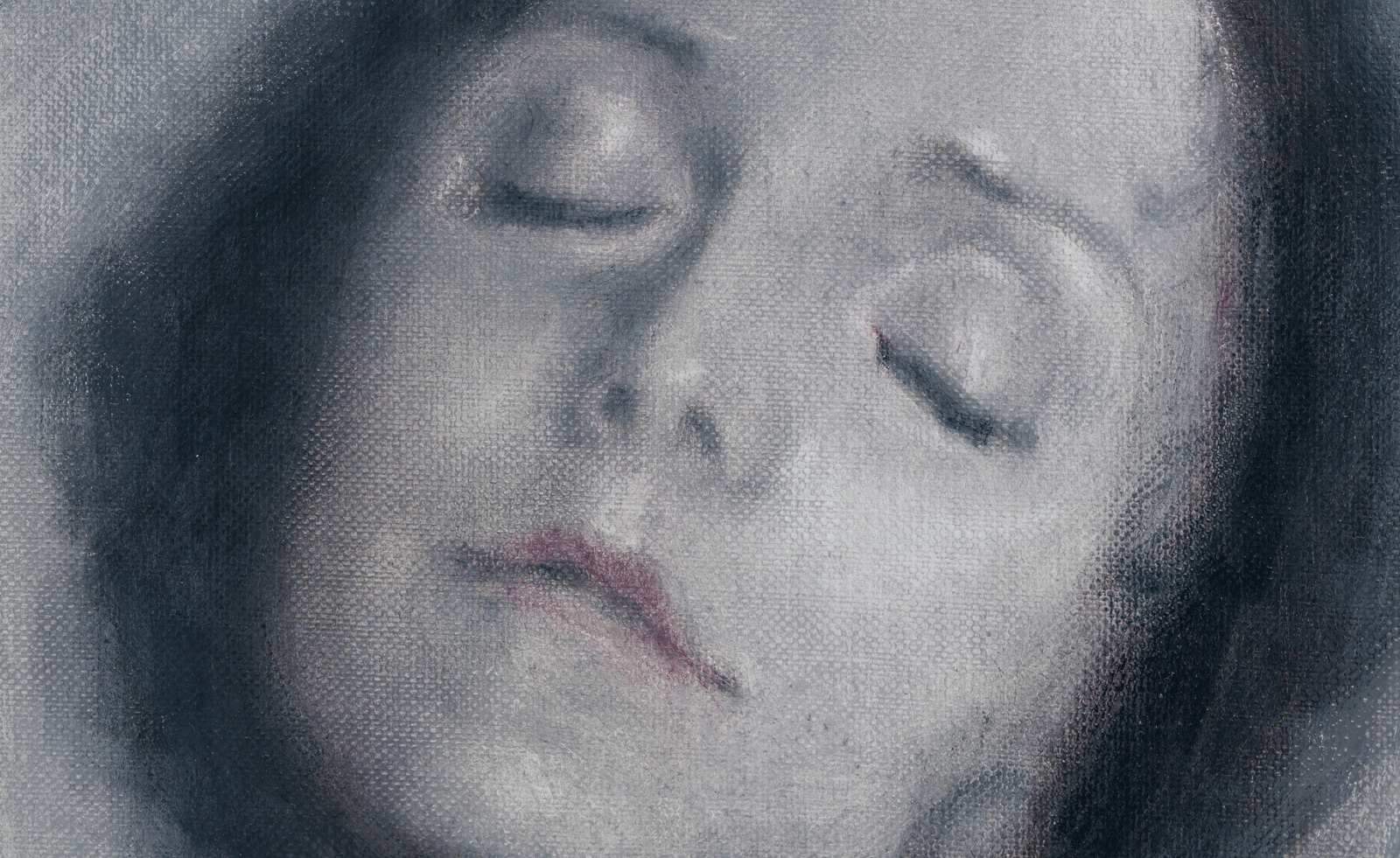 Classic figurative painting is given a glamorous and ghostly aura by Polish artist Łukasz Stokłosa
Classic figurative painting is given a glamorous and ghostly aura by Polish artist Łukasz StokłosaThe gothic meets the glamorous in Stokłosa’s works, currently on show at London’s Rose Easton gallery
-
 What's the story with Henni Alftan’s enigmatic, mysterious paintings? The artist isn’t saying
What's the story with Henni Alftan’s enigmatic, mysterious paintings? The artist isn’t sayingParis-based artist Henni Alftan's familiar yet uncanny works are gloriously restrained. On the eve of a Sprüth Magers exhibition in Berlin, she tells us why